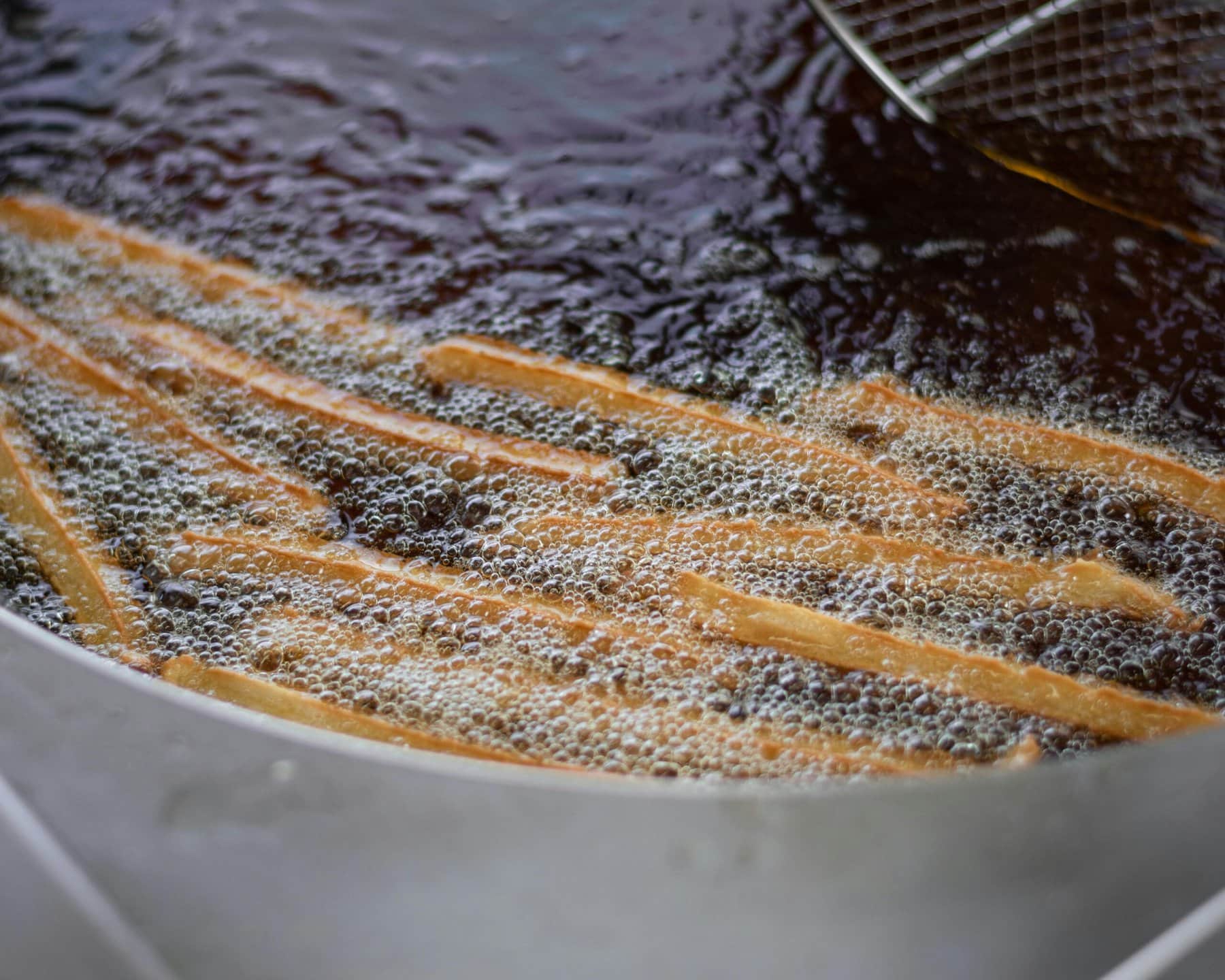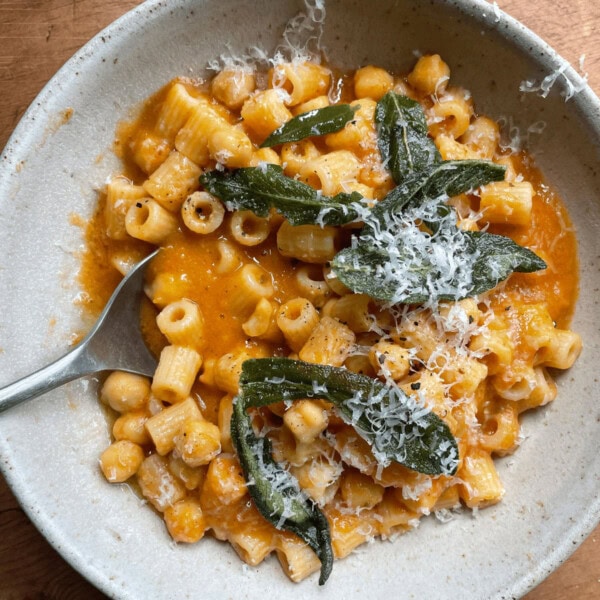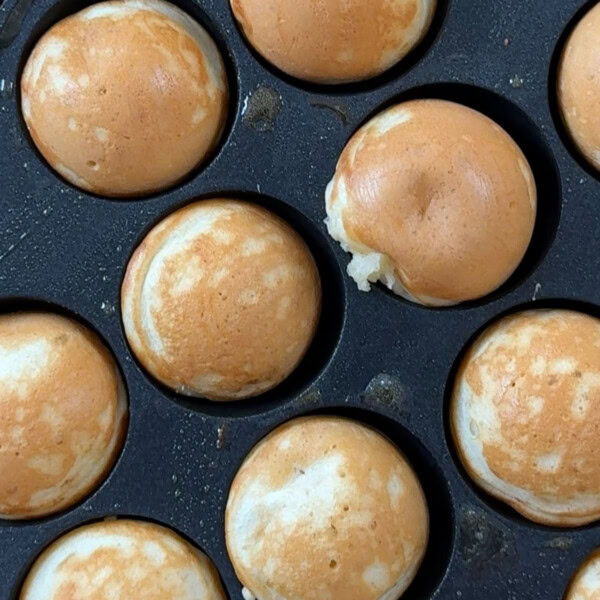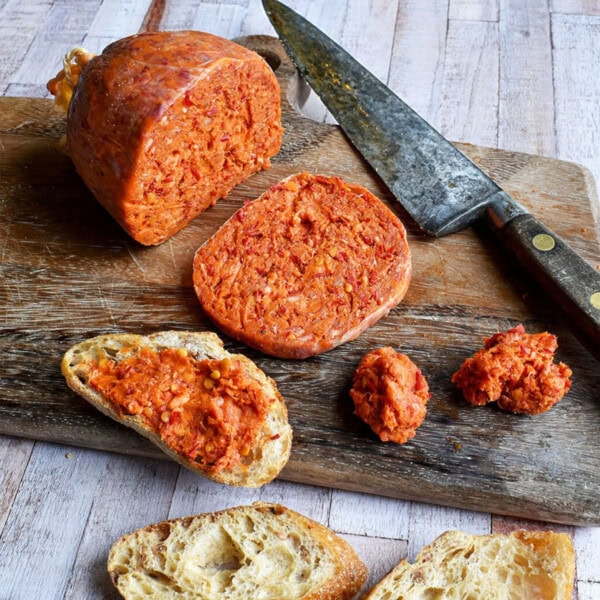If you've fried crispy chicken or you've decided to make apple fritters, they are of course delicious but then you will have leftover cooking oil that can be a pain to get rid of. You may have toyed with the idea of pouring it down the drain even (don't do this!) but this post will tell you exactly how to dispose of cooking oil.

This easy guide will give you a few options for how to dispose of the cooking oil safely as well as giving you tips on how to reuse cooking oil, if you can!
Jump to:
Never Pour Oil Down The Drain
The reason why disposing of oil is so tricky is that pouring it down the drain is not an option at all. The oil solidifies when it's down the train and eventually, it'll clog your pipes and lead to so many issues with your plumbing. It's not worth it at all! Pouring hot oil in the bin will also melt your bin liner too so the following steps will talk you through it.
Put In The Bin
- Leave the oil in the pan to cool COMPLETELY. Hot oil can be very dangerous so don't be tempted to try and dispose of it when hot.
- Use an old, empty plastic bottle or glass jar. Once the oil is cool, pour it into the empty bottle. You may need a funnel. You can also fashion a funnel out of greaseproof paper, shaping it into a cone shape and placing at the neck of the bottle. Otherwise, transfer the cooled oil to a measuring jug with a spout that will give you an accurate pour.
- Place the whole bottle full of oil in the bin.
Go To A Recycling Centre
- Leave the oil in the pan to cool COMPLETELY. Hot oil can be very dangerous so don't be tempted to try and dispose of it when hot.
- Use an old, empty plastic bottle or glass jar. Once the oil is cool, pour it into the empty bottle. You may need a funnel. You can also fashion a funnel out of greaseproof paper, shaping it into a cone shape and placing at the neck of the bottle. Otherwise, transfer the cooled oil to a measuring jug with a spout that will give you an accurate pour.
- Take it to your local recycling centre and dispose in the allocated bin. This avoids any bin messes, any more going to landfill and it can be recycled into biofuel.
Mix With Other Solid Waste
Mixing oil with absorptive materials such as sand, sawdust, flour means they turn into a solid mass which is much less messy or annoying to handle. I prefer the methods above as I find this is more wasteful than it needs to be, as you also waste the flour or sawdust, but it is an option.
How To Reuse Your Cooking Oil
However, in the interest of waste, if the oil remains fairly clear and not full of charred bits, you can reuse it to fry other things.
- Leave the oil in the pan to cool COMPLETELY. Hot oil can be very dangerous so don't be tempted to try and handle it when hot.
- Use a fine mesh sieve to strain out leftover food that might be in the oil. Leaving food in the oil can cause it to go bad and turn the oil. Strain the cooled oil into a measuring jug.
- Then pour the strained oil into a clean plastic bottle or glass jar and keep in a dark place for 1-2 months. If you don't have a measuring jug, you may need a funnel. You can also fashion a funnel out of greaseproof paper, shaping it into a cone shape and placing at the neck of the bottle. I find measuring jug the best method.
Remember that oil absorbs whatever you have fried to begin with. If you've fried chicken pakoray, I wouldn't then go on to fry sfingi doughnuts in the same oil, as you may have curry-flavoured doughnuts.
I wouldn't reuse oil more than three times. You could use it for sfingi doughnuts for something else sweet or for chicken katsu sandwiches for something savoury.
Freeze: you can freeze the oil if you aren't sure if you want to use it. Strain as above and transfer to an airtight container. Freeze for up to 1 year and thaw at room temperature when you're ready to use it.
How Do You Know If The Oil Is Rancid?
Your sense of smell will be most helpful here. If the oil smells bitter, funky or stale, it probably has gone bad. It should look fairly similar and smell fairly similar to how it was when the oil was first bottled and kept.
If it looks cloudy or foamy, that means it has gone bad too. If you freeze it, it will of course turn opaque and solid, but once it's at room temperature, it should go back to its typical state.





Leave a Reply